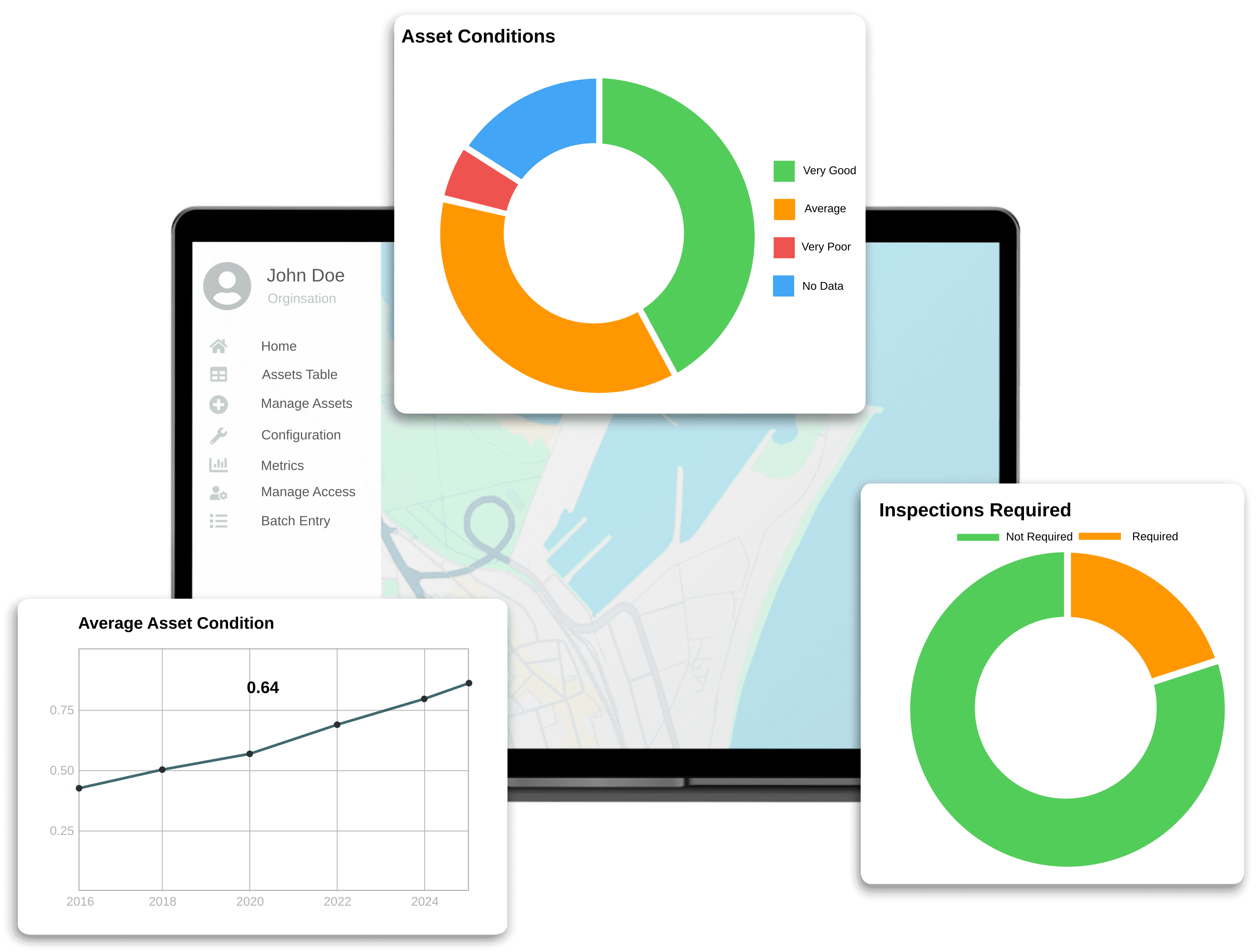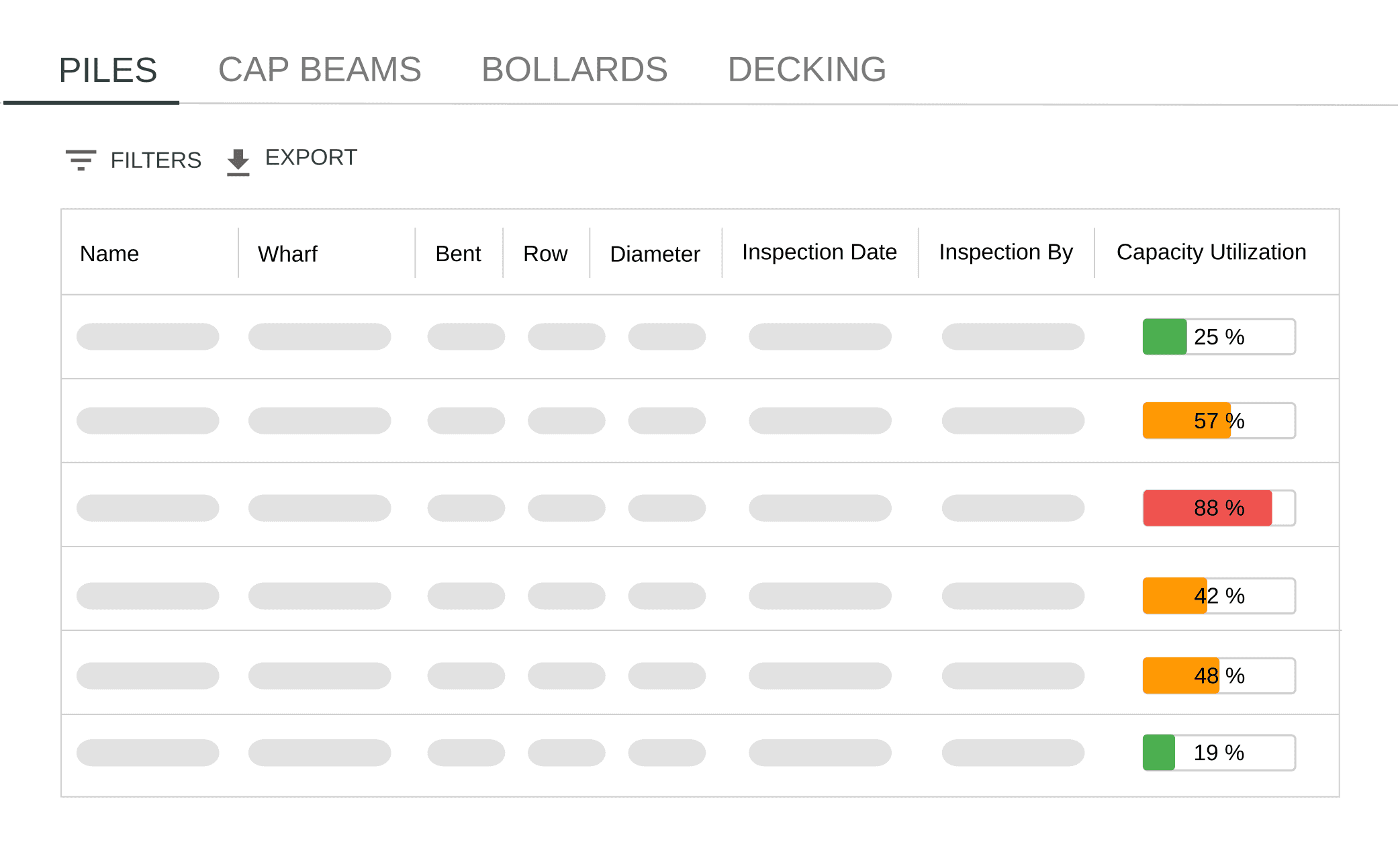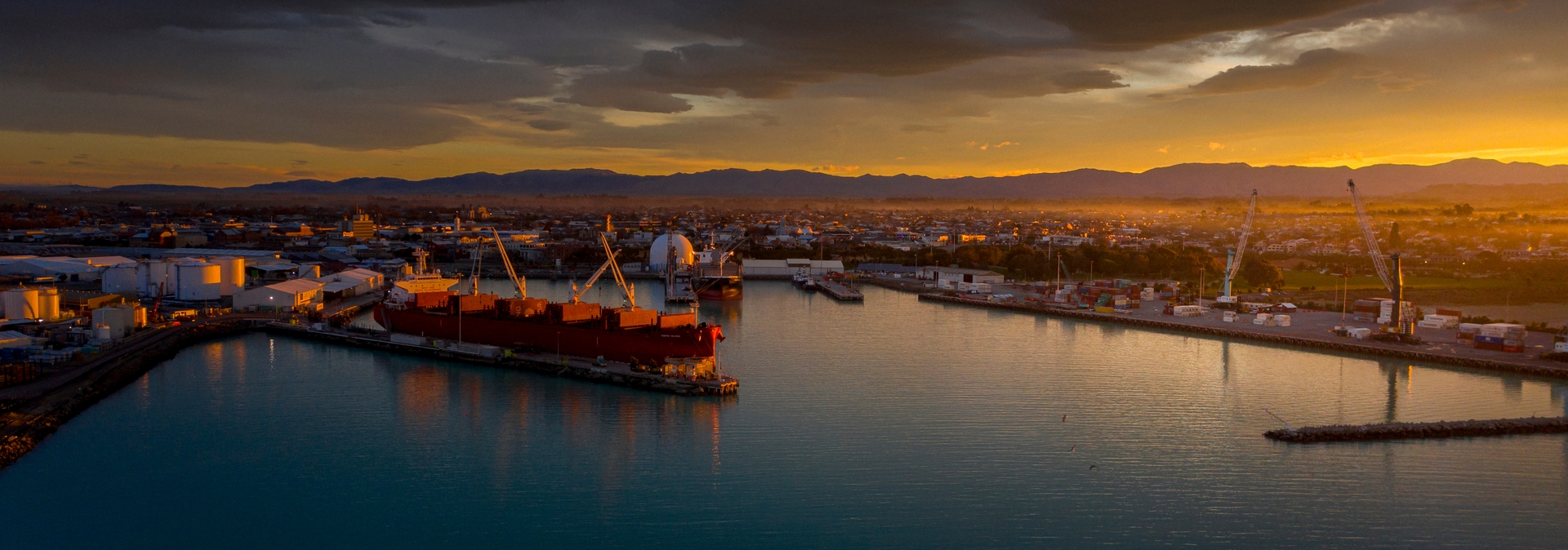PrimePort Timaru
Nestled in the heart of South Canterbury, New Zealand, PrimePort Timaru stands as a testament to the region's rich maritime heritage. For over a century, this bustling harbour has served as the lifeline of local commerce, proudly holding the title of New Zealand's second-largest fishing port. With its diverse capabilities, PrimePort efficiently handles dry and liquid bulk, fishing operations, container shipments, and logging activities.
The port's infrastructure comprises six wharves of varying dimensions and purposes, with all but one featuring traditional timber piling construction. The timber hardwood wharves have been improved over time, but they continue to require an increased level of management to ensure they are fit for purpose for the operational demands of the port.
The Challenge: Managing an Ocean of Asset Data
When it comes to the asset management of the timber wharves, the PrimePort Infrastructure Manager, Ben Kleinjan says:

"The key is to gather the information and present it in a such way so that you can appreciate what the risks are but also visually present that information to communicate with those in operational roles"
The problem is that Engineers love to produce data and to date there has not been a tool to easily take that data and present it in such a way so that it makes sense. Often the information ends up in various spreadsheets and folders, which would be frustrating and time-consuming to analyse and manage.
Key Issues Faced:
- Data Fragmentation: Fragmented inspection data across spreadsheets and paper records lacks centralisation, preventing effective year-over-year analysis.
- Limitations of Tabular Data Storage: Complex structural data and associated media (photos, records, CAD models) couldn't be properly integrated into spreadsheet formats, leading to information loss.
- Inadequate Spatial Context: Traditional folder-based organization failed to account for geographic properties and asset relationships.
- Resource Constraints: The port lacked the resources to employ a full-time GIS technician to manage a comprehensive geospatial system.
PrimePort Timaru recognised the need for a robust, integrated solution that could address these complex challenges while accommodating their resource limitations. The ideal system would need to unify diverse data types, incorporate spatial awareness, and provide intuitive access to historical asset information—all without requiring specialised technical expertise to maintain.
The Solution: The Birth of AssetSide
Recognising the need for a comprehensive solution to their asset management challenges, the infrastructure team embarked on an innovative journey to develop AssetSide, an in-house web application designed to transform their approach to infrastructure maintenance and planning.
They found that existing solutions weren't quite meeting the complex needs of the port operations. So they embarked on creating a tool that could handle the unique challenges they faced daily.

Key Features Include
Interactive Geospatial Interface
- Displays an aerial map of the port with distinct layers for different asset types
- Mimics the intuitive navigation of familiar platforms like Google Maps
Asset Information Hub
- Property Tracking: Monitor characteristics, log and track replacements, record critical data
- File Management: Attach notes, upload files, maintain audit trail
Inspection Management
- Log and review inspection data through standardized forms with timestamps, inspector details, and data validation to ensure consistent, accurate record-keeping.
Centralised Data System
- Organised storage for all asset information
- Faster retrieval and entry
- Enhanced data integrity and accessibility

Data Driven Decision Making
Over time, PrimePort has recognised the potential in AssetSide to revolutionise their maintenance prioritisation process. Enhancements have been made to continually improve and expand AssetSide including:
Automated Critical Load Calculations
Dynamic Condition Assessment
Precision Maintenance Prioritisation
Comprehensive Infrastructure Metrics
Making these changes have resulted in the following:
- Eliminated some dependence on external engineering consultancies, resulting in significant cost and time savings.
- Improved maintenance efficiency through precise prioritisation of at-risk assets.
- Enhanced decision-making capabilities with real-time, data-driven insights
- Strengthened relationships with insurers through transparent and comprehensive reporting
Automate the Boring Stuff
The success of AssetSide at PrimePort Timaru has paved the way for a broader revolution in maritime landside infrastructure management. Recognizing the potential to transform asset management practices across the industry, the innovative minds behind AssetSide have established AXYS, a dedicated company focused on bringing this powerful solution to ports worldwide.
